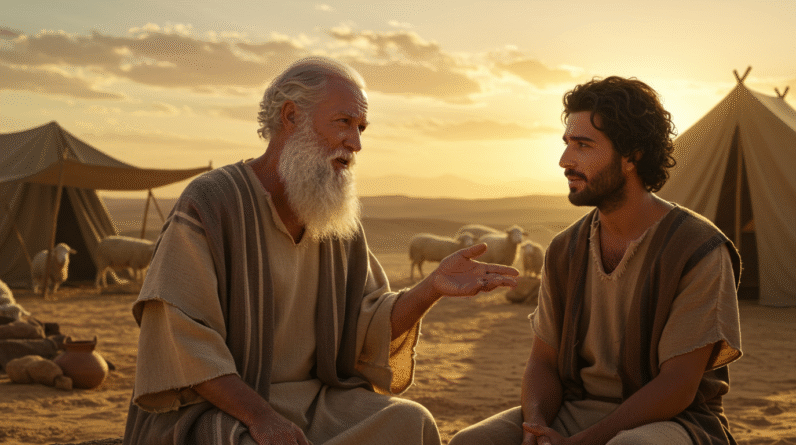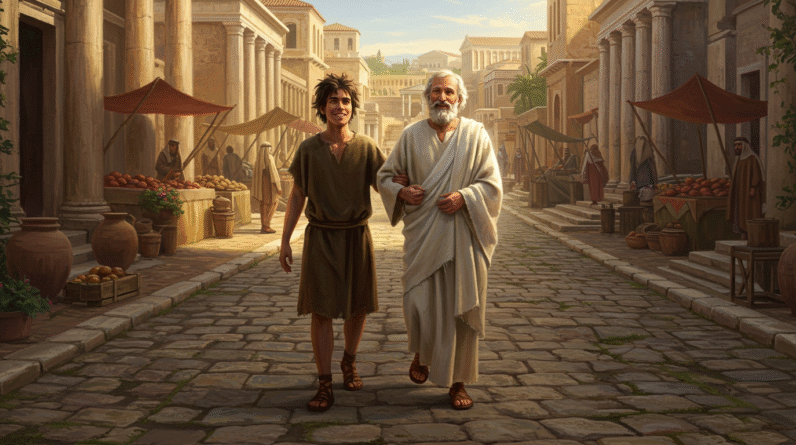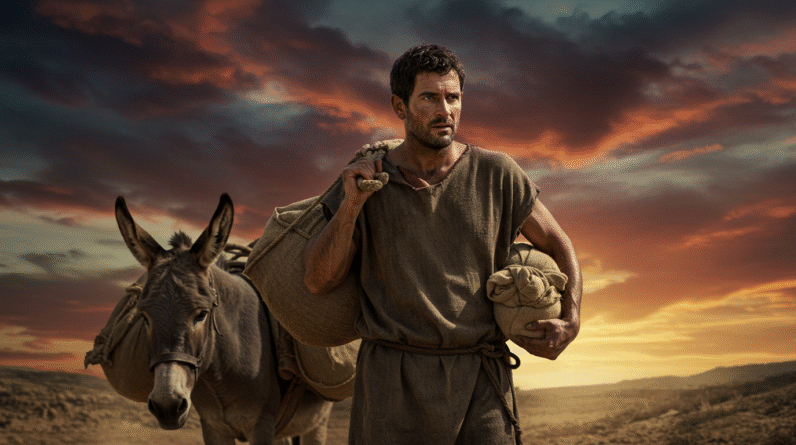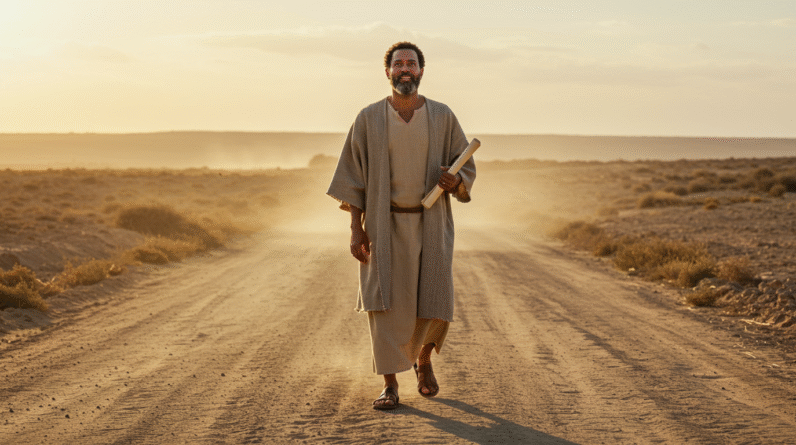Discover Miriam in the Bible: A Sister’s Role in the Rise of Moses—a powerful story of courage, faith, and leadership. Learn how Miriam’s actions helped shape the destiny of one of Israel’s greatest leaders.
Table of Contents
ToggleMiriam In The Bible: A Sister’s Role In The Rise Of Moses
The story of Moses is one of the most well-known narratives in biblical literature, intricately wrapped with tales of liberation, prophecy, and divine intervention. But within these grand arcs lies the story of Miriam, whose role in Moses’ journey is often overlooked. In this article, let’s delve into the life of Miriam in the Bible, focusing on her significant contributions to her brother’s rise and the broader narrative of Exodus.
Miriam: The Early Years
Miriam’s first significant appearance is in Exodus, during the harrowing period of the Israelites’ oppression in Egypt. You can imagine the tension in the air: a decree from Pharaoh demands the death of every newborn Hebrew boy. In this perilous environment, Moses is born. Here, Miriam’s role as Moses’ older sister becomes pivotal.
Watching Over Moses
When Moses’ mother can no longer hide him, she places him in a basket and sets it afloat in the Nile River. You can sense the mixture of desperation and hope in this act. Here is where Miriam steps into the story:
Then his sister stood at a distance to see what would happen to him. Exodus 2:4.
Miriam’s vigilance is crucial; she stands watchful, a silent guardian overseeing her baby brother’s uncertain fate. It is no small task for a young girl, yet she displays remarkable courage and initiative.
Intervening with Pharaoh’s Daughter
As the narrative unfolds, Pharaoh’s daughter discovers Moses among the reeds. Sensing an opportunity, Miriam approaches with a suggestion that changes everything:
“Shall I go and get one of the Hebrew women to nurse the baby for you?” she asked. Exodus 2:7.
This is no mere act of bravery; it’s strategic thinking. Miriam ensures that Moses’ mother returns into the picture, allowing him to be nourished by his biological family while under royal protection. Her quick thinking saves Moses’ life and sets the stage for his eventual leadership.

Miriam: The Prophetess
Miriam reappears during the Exodus from Egypt, playing a distinctive role as a prophetess. The term “prophetess” denotes a woman through whom God speaks. When the Israelites cross the Red Sea, escaping Pharaoh’s pursuing army, Miriam leads the women in song and dance, celebrating their deliverance:
Then Miriam the prophet, Aaron’s sister, took a timbrel in her hand, and all the women followed her, with timbrels and dancing. Exodus 15:20.
Leading Through Worship
Miriam’s leadership is exemplified through worship. She leads the women in the community, contributing to the spiritual, as well as the physical, sustenance of the Israelites. Her actions underscore the role of women in spiritual leadership, which is a powerful reminder of the diverse forms leadership can take.
Miriam’s Song
Miriam’s song is a rare glimpse into the presence of individual female voices in Scripture, a reminder of the often-unsung contributions of women. Her song isn’t just music; it’s theology. It echoes the triumph of freedom over oppression and faith over fear.
“Sing to the Lord, for he is highly exalted. Both horse and driver he has hurled into the sea.” Exodus 15:21.
The Strife within the Family
Despite her essential roles, Miriam’s story also reflects her humanity. Like her brothers, Aaron and Moses, she faces personal challenges and shortcomings. One notable episode involves her criticism of Moses.
Miriam’s Jealousy
In Numbers, Miriam criticizes Moses over his Cushite wife and, perhaps more deeply, his growing authority. This unfolds a family tension:
“Has the Lord spoken only through Moses?’ they asked. ‘Hasn’t he also spoken through us?” And the Lord heard this. Numbers 12:2.
Miriam’s question reveals a tinge of jealousy and a desire for recognition. It’s a very human moment, reflecting anxieties that are relatable even today — questions of value, influence, and sibling rivalry.
Consequence and Restoration
The consequences of Miriam’s actions are severe. She is struck with leprosy, a divine rebuke for her challenge to Moses’ unique position. However, what follows is equally significant: Moses intercedes for her. His prayer reflects a profound sibling bond, despite tensions:
So Moses cried out to the Lord, “Please, God, heal her!” Numbers 12:13.
Miriam’s eventual restoration is a testament to forgiveness and familial love. She serves her customary period of isolation, a symbolic yet real purification, and is then welcomed back into the community.
Miriam’s Legacy
Miriam’s narrative closes without much fanfare, yet her legacy endures. Her contributions to the Hebrew Bible’s foundational stories offer invaluable insights. She is a figure of resilience and leadership in a world where women’s voices were often sidelined.
A Role Model for Courage and Faith
Miriam’s courage at the river, her leadership at the sea, and even her failure and redemption serve as powerful narratives for faith communities. Her story encourages you to consider the multifaceted nature of leadership and influence, highlighting that each role, no matter how small it may seem, can significantly alter the course of history.
The Power of Family Support
Miriam’s story also emphasizes the importance of family support. Her early intervention at the Nile was instrumental in Moses’ survival. It’s a narrative that speaks to the power of kinship and collaboration in achieving great things, reinforcing that behind every significant leader, there are often unsung heroes offering critical support.
Conclusion
Miriam’s role in the Bible might not be as prominent as Moses’, but her impact is undeniable. She stands as a testament to the significant, sometimes subtle, roles women have played in sacred stories. Her combination of courage, leadership, and humanity offers lessons that resonate far beyond the biblical era.
Miriam’s life is a profound reminder that throughout history, women have been central to the unfolding of divine plans. Her story invites you to view the larger biblical narrative with a nuanced understanding of the interplay between family, faith, and leadership.

🔍 Explore More Bible Insights:
✅ 1. The Role of Eliab – David’s Brother in His Journey to Facing Goliath
Tone: Relational, reflective, character-focused
🔹 “Family Tensions and God’s Purpose – Discover the Connection”
Read it here.»
✅ 2. What Jeremiah 29:11 Means for Us Today
Tone: Hopeful, encouraging, life application
🔹 “God’s Plans Still Stand – Find Your Hope Here”
Read it here.»
✅ 3. The Wise and Foolish Builders – A Strong Foundation in Faith (Matthew 7:24-27)
Tone: Foundational, practical, discipleship
🔹 “Build Your Life on the Rock – Keep Learning”
Read it here.»
✅ 4. The Roman Centurion at the Cross – A Moment of Revelation
Tone: Awe-inspiring, redemptive, gospel-centered
🔹 “From Witness to Believer – Read His Revelation”
Read it here.»
As a ClickBank Affiliate, I earn from qualifying purchases.
Acknowledgment: All Bible verses referenced in this article were accessed via Bible Gateway (or Bible Hub).
“Want to explore more? Check out our latest post on Why Jesus? and discover the life-changing truth of the Gospel!”
Related posts:
- Ahijah the Shilonite and the Kingdom’s Fate
- Exploring the Legacy of Barzillai the Gileadite in the Bible
- The Tale of Rekab and Baanah: A Story of Ambition and Betrayal
- Unraveling the Role of Jezebel’s Eunuchs in the Bible’s Dramatic Narrative
- Exploring the Life of Uriah the Prophet
- Ebed-Melech’s Courageous Stand in Jeremiah’s Story
- Exploring the Role of Nympha in Colossians
- Exploring the Story of Philemon in the Bible
- Exploring Mary, the Mother of Mark, in Acts: A Key Figure in Early Christianity
- Exploring the Story of Zenas the Lawyer in Titus








